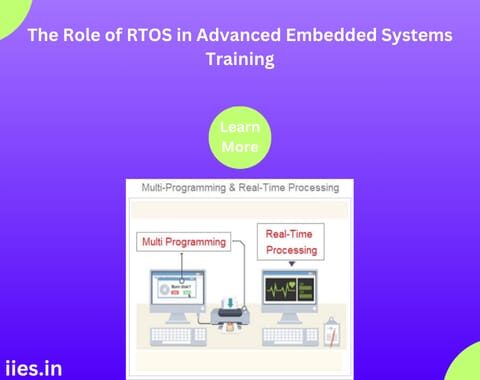
The rapid advancements in technology have made embedded systems an integral part of modern devices and applications. As these systems become more complex, the need for real-time capabilities has grown, bringing Real-Time Operating Systems (RTOS) to the forefront. This blog explores the critical role of RTOS in advanced embedded systems training, highlighting its importance, core components, benefits, popular platforms, practical applications, challenges, and a step-by-step guide for implementation.
An RTOS is an operating system designed to process data as it comes in, typically within a strict time constraint. It is used in systems where timing and reliability are crucial.
RTOS is essential for applications that require high precision and reliability, such as automotive systems, medical devices, and industrial automation. It ensures tasks are completed on time, maintains system stability, and improves performance.
Task Scheduling: RTOS efficiently manages task execution by prioritizing and scheduling tasks based on their urgency.
Interrupt Handling: RTOS promptly responds to interrupts, ensuring timely processing of critical events.
Real-Time Clock: RTOS uses a real-time clock to manage time-dependent operations and deadlines.
Proper prioritization ensures critical tasks are executed first, maintaining system reliability and performance.
Automotive Systems:
Use of RTOS in advanced driver-assistance systems (ADAS) and autonomous vehicles:
Industrial Automation:
RTOS applications in robotics and manufacturing systems:
Consumer Electronics:
Smart devices, wearables, and IoT applications:
Medical Devices:
Real-time processing in critical healthcare applications:
Step 1: Choosing the Right RTOS:
Factors to consider based on application requirements:
Evaluate RTOS based on system requirements, hardware compatibility, and support community.
Step 2: System Design and Architecture:
Designing a robust system architecture with RTOS:
Define the system’s structure, task organization, and resource allocation.
Step 3: Task Creation and Management:
Best practices for task creation and scheduling:
Develop tasks with clear priorities and dependencies to ensure efficient scheduling.
Step 4: Inter-Task Communication:
Implementing effective communication mechanisms:
Use appropriate communication methods like semaphores and queues for reliable task interaction.
Step 5: Memory Management:
Strategies for efficient memory use:
Balance dynamic and static memory allocation to optimize performance and predictability.
Step 6: Testing and Validation:
Ensuring the system meets real-time requirements:
Conduct thorough testing to verify that the system adheres to real-time constraints and performs reliably.
Step 7: Optimization and Maintenance:
Continuous optimization and handling system updates:
Regularly update and refine the RTOS implementation to maintain optimal performance and security.
In conclusion, the indispensable role of Real-Time Operating Systems (RTOS) in the realm of advanced embedded systems cannot be overstated. Serving as the linchpin of sophisticated embedded applications, RTOS provides a robust foundation upon which engineers can build high-performance, real-time solutions tailored to a diverse array of industries and use cases.
Indian Institute of Embedded Systems – IIES